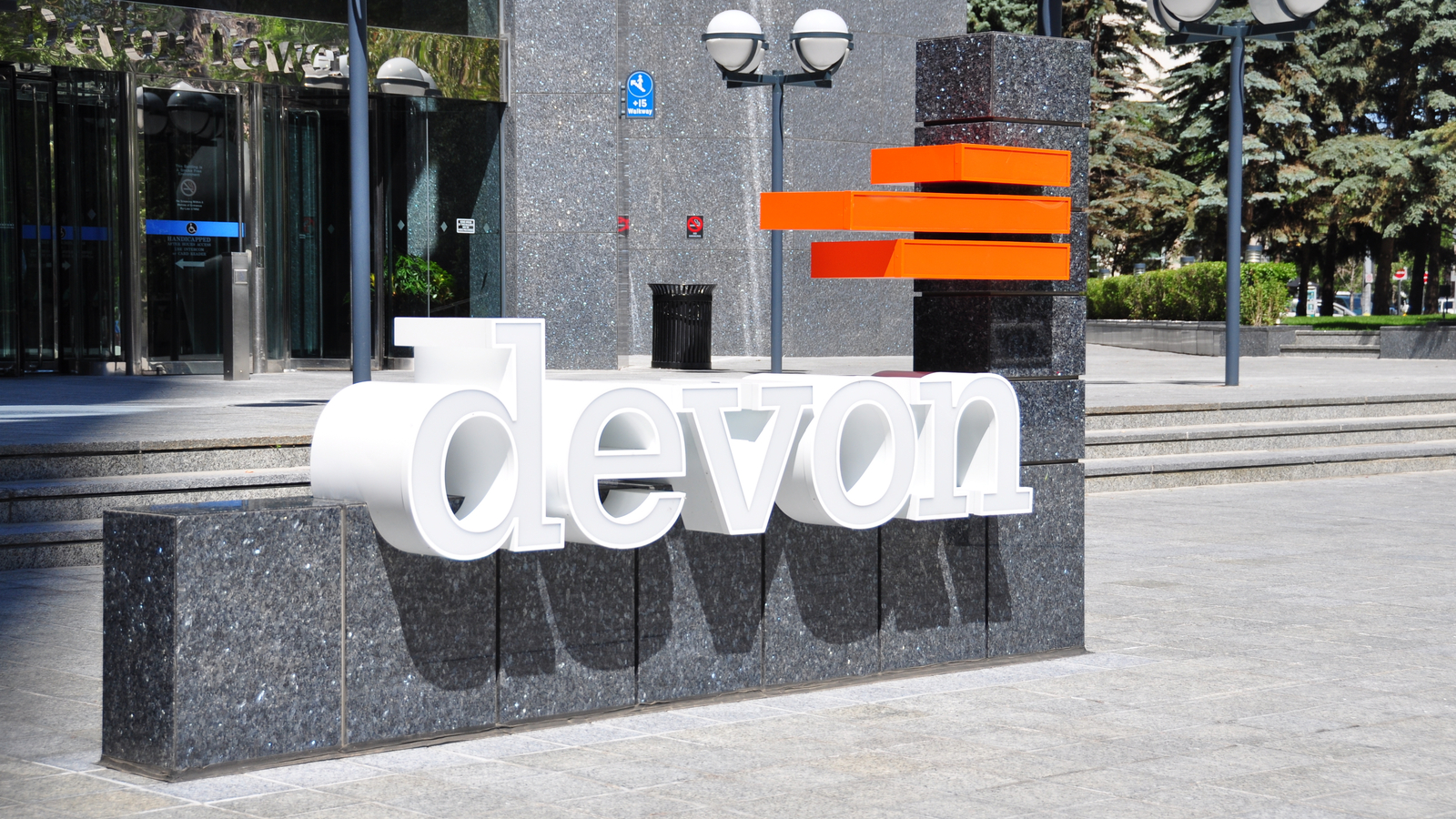- Devon Energy (DVN) stock now pays a $1 per share quarterly dividend ($4.00 annually), giving it a 6.50% dividend yield.
- This will likely rise, as the variable component of the dividend grows with higher free cash flow (FCF).
- Devon has expanded its buyback program to $1.6 billion, or 3.9% of its market capitalization, pushing DVN stock higher.
Devon Energy (NYSE:DVN) is moving up again this year after being the best performing stock in the S&P 500 last year. This was because of its super generous dividend and buyback policy. DVN stock. So far this year as of March 28, at $60.66 per share, it’s up 37.66% year-to-date.
Right now Devon Energy pays a $1 per share quarterly dividend, or $4 annually. It has fixed and variable dividends components. That gives it a dividend yield of 6.50%.
The variable portion is calculated as 50% of quarterly free cash flow, after deducting the fixed dividend slice. So far this gives it a 6.50% dividend yield (i.e., $4.00/$60.66).
| DVN | Devon Energy | $60.66 |
Dividend Projections for DVN Stock
In a recent article, I projected how the company can probably pay out a higher dividend through the year. This could raise the dividend to as high as $4.68 per share. That raises the dividend yield to 7.49%. Here is how that works out.
There is good reason to believe that Devon Energy can produce higher free cash flow this year and hence its variable dividends.
First, last year we know that in 2021 Devon produced 209 million barrels of oil equivalent (MMBoe) based on page 10 of its 10-K. Last year its revenue was $12.206 billion. So that implies Devon’s average barrel of oil price equivalent was $58.40 (i.e., $12,200 million/209m bb).
This is a lot lower than where the price of oil is today. For the past quarter, it has been well over $100, probably twice the $58 level from last year.
Just to be conservative let’s say that it makes $100 per barrel this year on average. In its 2022 guidance, Devon said that it will produce 570,000 to 600,000 barrels of oil equivalent daily. That works out to an annual rate of 208 million barrels of oil equivalent (MMBoe) to 219 MMBoe.
The 600MBoe estimate can be seen in the guidance document table on the right:
Therefore, if we multiply these MMBoe forecasts by $100/barrel you can see that revenue will skyrocket to between $20.8 billion and $21.9 billion. Again, that is up from $12.2 billion last year, or a rise of 70.5% to 79.5% in sales this year.
Moreover, last year, Devon’s operating cash flow margin was 40% (i.e., $4.899 billion/$12.2 billion). Therefore, this year we can assume that its operating cash flow will be about $8.5 billion at the midpoint of the revenue targets.
After deducting the fixed dividend payments of $106 million and $2.44 billion in capital expenditure (capex) from its guidance, its FCF will be $5.966 billion. The capex guidance can be seen in the table on the right:
The variable dividend deducts 50% of FCF, so it could be $2.98 billion. Let’s call it $3 billion. Since there are 664 million shares, the variable dividend could be as high as $4.52 per share this year.
After adding back the 16 cents in fixed dividends, the total dividend this year could reach $4.68 per share. That is 17% over the $4 present dividend rate. It will give DVN stock a very high yield at 7.488%.
The Bottom Line
Moreover, Devon has raised its buyback program significantly. Devon announced on Feb. 15 that it upped its buyback authorization to $1.6 billion by 60 percent. That works out to 3.9% of its $40.96 billion market capitalization. If it were to buy back this amount in one year that would use up 55% of the $2.9 billion in FCF it generated last year.
Going forward, DVN stock trades for just 8.66x forward earnings. This makes it one of the cheapest and most profitable energy stocks in the U.S.
Therefore combined with its high yield (6.50%) and its new powerful buyback program, and cheap P/E metric, DVN stock looks like good value. It very likely can move substantially higher from here.
On the date of publication, Mark Hake did not hold (either directly or indirectly) any positions in the securities mentioned in this article. The opinions expressed in this article are those of the writer, subject to the InvestorPlace.com Publishing Guidelines.
